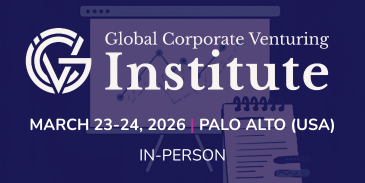Academic freedom to invent rather than university socialism is the core to a healthy innovation culture.*
In the US state of Washington, Senator Maralyn Chase has introduced Senate Bill 6542, the Innovation Bill of Rights. The bill proposes a law that would forbid public universities from making assignment of inventions compulsory as a condition of employment or use of facilities, unless required by an external sponsor of research. This bill sparked quite a debate, with the university leaders arguing for institutional socialism and the faculty wondering whatever happened to academic freedom.
At the core of the debate is the question of whether people expect innovation to come about as the result of institutional order and control, or from individual initiative and diversity. It’s Keynes vs Hayek! The great challenge is that this debate in general has no black and white–not because there isn’t any to be had, but that different societies have different needs, and a chaotic society recovering from upheaval might desire Keynes as a kind of orthodontics to hold things together, provided it can avoid corruption, maintain stability, and not find itself given over to autocracy, as we have seen in Russia and what hangs in the balance in countries involved in the Arab spring. But for innovation, Hayek is the critical piece where there is established government.
Personal initiative has to be cultivated, then celebrated, with all its vulnerabilities and exposures. Innovation is not centrally planned, and the status quo can act as a filter on new things but not the generator or discoverer of such things. Not because the status quo merely represses stuff–it does that too–but because, in university settings, it defines even what the problems are supposed to be and where to seek solutions to them. Innovation often rejects not only the prevailing ideas on solutions, but where to look for them, and even the claim to know the problems! Innovation just as often makes the status quo’s problems obsolete as it provides a new solution. While one person tries to get Windows to boot faster, another is creating a new version of Linux, and another is working on an entirely different way to design a computer, without an operating system, and another is going, well, how could we live without computers? Is that possible? Has it ever been tried?
My own experience from working in university intellectual property and innovation for 20 years, as a former director of university technology licensing offices at the University of California and at the University of Washington, including directing technology transfer offices and working with industry on research and affiliation contracts, is that even a little bit of institutional order and control is an entirely different world from none. The controls that the institution can productively provide are those requested by its creative personnel, not ones imposed with the approval of an administrative committee. If there is to be a trial it must be after the event, not in anticipation of it!
The moment the institution is self-interested, it has an organizational conflict of interest that shapes the entire activity–worries about risk, desire for profit, desire to take credit, demand for respect, properness and review for everything–and when this happens, the university has compromised its role as a public arbiter of invention development activities–looking out for public safety, governance (not ownership) of requests for resources, independence in reviewing claims for efficacy.
As Chris Anderson underscores in his book Free, there is a huge difference between free and even paying a penny for something. Free is fundamentally a different transaction, financially and socially. Once something is not free (even if it is owned), one has a sale or license or lease, and with that come obligations that are imposed, often with the implied involvement of a government to enforce the terms of the agreement. If the government is one that everyone participates in and accepts, even if with quibbles, then perhaps the differences can be smoothed over. But if the government itself is conflicted, that one tribe or religion or party controls and the others distrust, then justice itself is suspect, not merely in the courts, but in government policies and regulations, in funding, in rapidity of action, in expectations. Thus, even a sale for a penny can trigger accounting and tax requirements, which even if only selectively enforced change a transaction from private to of state interest.
Even where established government is generally acceptable, the institutional overhead in a transaction for sale or license of inventions and other creative works is much higher than that of an individual or a private concern such as a small company. The institution has its entire operations and assets to consider, for impact and liability, for possible dissent, for differential benefit, for consistency not only with past deals but with imagined future ones–even if there never will be another one like one under consideration!
Imagine that institutional administrators, faced with an amazing new invention licensing deal, might try to invoke the principle of "precautionary consistency" and try to structure the deal so that it would appear to be repeatable in the future. "If we did this deal again and again, that would be inappropriate. So we cannot do this deal." The fallacy, of course, is that one does not have to do the deal again and again. It is like marriage–one can vow to do it only once and get on with it, rather than imagine repeated marriages, each one undermining the previous one.
The overhead of transaction is actually not directly related to prudence. In an odd way, the mere fact of an institution’s involvement increases risk, slows pace, and increases costs. People sometimes mistake this for increasing the "value" of the technology and ensuring a deal is done "properly". Xerox’s Palo Alto Research Park, or PARC, produced some of the most important tools we use today on computers–the graphical user interface, the mouse, ethernet (for network communications), and postscript (for computer typefaces). Xerox has a policy of classifying research ideas and inventions into "strategic" and "non-strategic". Those that were "strategic" were given Xerox’s full attention–start a new division as a wholly owned subsidiary of Xerox, staff it with experienced senior Xerox leadership, and give it a budget to work with. A recipe for disaster. The burden of Xerox’s reputation and management style and remaining consistent to Xerox’s branding and contracting requirements were enough to swamp any such initiative. Researchers hoped Xerox would not find their work "strategic". It is the non-strategic work at PARC that has shaped the world of computing in such significant ways.
For institutions, this is a tough lesson. Even a university’s demand that all inventions be disclosed for institutional review is chilling on free. The difference between an offer to review and a demand for review is everything. Imagine if all email had to be reviewed. All phone calls pre-screened. Every trip off campus had to be pre-approved because something might be created, or invented, or discovered there, and the university demands the first right to decide if it is strategic. Well, that would be the end of an open, independent university, wouldn’t it? But this is exactly what administrators at the University of Washington are trying to do right now. They have imposed a requirement that a form must be submitted to their Center for Commercialization in advance of any outside professional work, including work that is for free, if the university thinks that one could have charged a fee for the work but declined to do so. T
his demand then captures all such informal interactions and makes them subject to an ethics violation if pre-approval has not been received.
But it’s even worse than that, because the University of Washington administrators have inserted into the approval form a present assignment for future inventions, works of authorship, and even "know how". If you learn something in the outside work, the university can claim it–not after review and a request for assignment, but outright, at the time the know-how comes into existence!
The use of an expansive present assignment requirement, considered prudent, is in reality devastating to the sources of innovation. There are various rationalizations in a university for using a compulsory approach to ownership of intellectual property. One common rationalization is that an employer should have a right to the work of the employee (even when that work is "non-strategic"). Another is that a university’s facilities are provided for public use, not for private profit-making (and thus, for institutional self-interest, not for the benefit of others, including when others are faculty or students). A third is that a university has more resources and expertise, and therefore it can do a better job of developing an invention and securing partnerships, than can any mere individual faculty member or student. These are all reasonable claims, from the perspective of institutional self-interest. If an institution is in the business of discovery for itself, then it will feel justified in making one or more of these claims and seek to go about its business of claiming all the worthwhile intellectual property that it can from its employees (and anyone else who might use facilities or collaborate on a sponsored project, even informally).
This is just what the University of Washington is doing. It has in essence declared its nearly $1bn per year research enterprise is dedicated to producing materials that its Center for Commercialization will attempt to sell to industry and withhold from the public to increase its value (to the institution). The entire research enterprise is given over to institutional self-interest. It has reasoned its way to an organizational conflict of interest that has been made so plausible and attractive that administrators are willing to sacrifice academic freedom, diversity of action, and the entire creative output of the institution in vain attempt to make money. As the experience of Xerox PARC shows, it will not happen. Even the track record of the Center for Commercialization, which has spent more than $20m in just under three years, is dismal. The number of start-ups is flat, it has stopped reporting license transactions, and it has told the state legislature that it is not doing this for the money. What then? Why the ownership claims? Why the requirement to pre-approve all outside work?
No, this is a subversion of Keynes and a failure by an institution to set the appropriate limits to its own powers and self-interest. If one wants innovation to prosper in a university environment, it cannot be under a Geneva Convention that sets standards for the treatment of captured things. It must be a form of Bill of Rights, that limits the power of the state, the institution, the status quo, so that innovation has room to operate, below the radar of strategic planning, without the requirement to use the orderly assistance of experts selected by the institution. This approach has risk and disorder and uncertainty, but it is in these very things that innovation prospers. The business of the institution is to be ready to assist when asked, and to prepare the capabilities to assist in unexpected ways, at inopportune times, and to guard against things that would disrupt academic commitments while celebrating creative initiative.
Can such a thing be done? Is not autocracy with a comprehensive claim to ownership a stronger, more confident approach? For a university, which is itself an ancient form of innovation governance, the answer is: yes, universities can be tremendous sources of innovation if they have the courage to limit their own powers and remain institutions of independent inquiry and initiative within a world of state, religious, corporate, and social interests that would own and suppress or co-opt innovation arising from scholarly inquiry. Autocracy is not a solution for universities. The only way is voluntary ownership of inventions and other creative works. That is what enables economic impact and positions the university to serve as a steward rather than self-interested competitor to the needs of its creative personnel. That was the way of the past for higher education, and that also its future.
* This guest comment is a version of an Op-Ed published in GEN – click for link
The author is also an adviser to IP Advocate, which has an education campaign, Stanford v. Roche: University Ownership versus Stewardship.







